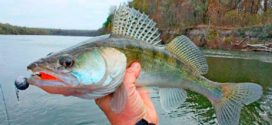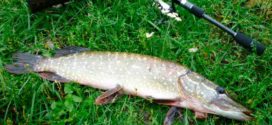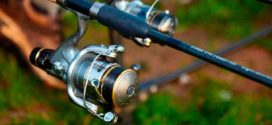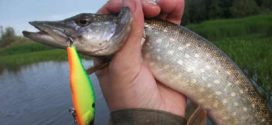Float rods are preferred mainly by beginner anglers. More experienced use the so-called feeders, in fact, an improved version of the traditional "donkey". In order for this method of fishing to really give pleasure, you should choose the right equipment.
We will deal with only one of its elements - fishing line. By what criteria it needs to be evaluated and what to take into account in order to understand which line is better for the feeder - this will become the subject of conversation.
Comparative characteristics of different types of fishing line, product features and individual shortcomings, recommendations for use depending on experience and fishing conditions are detailed here . Novice fishermen should familiarize themselves with all the nuances of the choice.
Content
Basic requirements for a fishing line for a feeder
It is rather difficult to give preference to a monofilament or braided "thread". There are many factors that influence the choice of a particular line. It is enough to note only the main ones to make it clear that not a single fisherman, even with many years of experience in feeder fishing, will undertake to give an unambiguous recommendation to the question “which is better ...”.
- Cast length.
- The type of fish being fished for.
- Features of the reservoir - the characteristics of the bottom, the degree of transparency of the water, the presence of vegetation, depth, and so on.
- Fishing skill.
It should be noted that even the same type of fishing line is produced by different manufacturers, respectively, they differ, among other things, in their quality, reliability, shelf life, series. In some cases, it is advisable to use a braided thread, in others - monofilament. And which one will be better in this or that case, can be determined only by knowing the criteria for the compliance of the fishing line with the conditions of fishing on the feeder.
Optimum combination of rigidity and elasticity
The main purpose of fishing on the feeder, as well as on the donk, is to “hunt” for large specimens of fish. Those who focus on crucian carp or various small things like bleak, perch, roach prefer a float rod. Therefore, in this case (when fishing from depth or distant casting), the fishing line must be strong enough.
On the other hand, its low extensibility significantly complicates the process of playing the fish, especially if it has to be done from a great distance, and even if a really large and strong individual has been caught on the hook. The slightest awkward, poorly calculated movement of a fisherman, and a line that is too stiff will immediately break.
Sensitivity
Opinions differ on this parameter. But experienced fishermen are unanimous in one thing - when casting to a distance of 25 ± 5 m, there is no difference between a monofilament and a “braided” one.
Line section
Also an ambiguous question.
- Firstly, a wet fishing line loses strength (and this characteristic is directly related to the diameter) by about 25 - 30%.
- Secondly, each tied knot, even the most reliable, is another 10% in the negative.
- Thirdly, the weight of the feeder should also be added. This also needs to be corrected.
At the same time, an increase in the diameter of the fishing line leads to an increase in its windage. In windy weather, when fishing in the current, you will have to use a heavier feeder. It turns out a vicious circle.
Acceptable cost
Bottom fishing has a significant drawback. Due to the presence of sharp stones, shells, eyebrows, and so on, cuts (cliffs) of the fishing line are not uncommon. The use, for example, of a more expensive "braid", if there are options, in such conditions is hardly rational from an economic point of view.
But which brand and series is really better depends not only on the characteristics of fishing, but also on the manufacturer. A small overview of the modifications will help the reader make the right decision on his own. In such a case, third-party advice is hardly appropriate.
Recommended lines for feeder fishing
The author deliberately does not give prices, as they vary depending on the section and region of sale. The second reason is that cost is unlikely to be of great importance when it comes to choosing the best fishing line. In this case, the problem of saving fades into the background.
What exactly to buy, you can understand by reading all the features of the product. It should only be taken into account that all the pluses and minuses indicated below are very relative; the final decision can only be made taking into account all the specifics of the upcoming feeder fishing.
Shimano Technium
If you focus on advertising brochures, then this fishing line is positioned as an intermediate option between monofilament and braided. Served on reels of 200 or 300 m.
Advantages:
- Optimum extensibility (does not exceed 12%).
- Increased strength.
- Exact compliance of the section with the indicated value.
- Various colors, including "camouflage".
Flaws:
- The presence of "memory". This is typical for woods with a cross section of 0.2 or less. There may be confusion when the tension is loosened.
- There is a high probability of buying a counterfeit, especially with hands. It is the Shimano Technium line, given that it is one of the best and in demand, that is most often faked.
- High price. This line for the feeder (from the manufacturer, not an imitation) is the most expensive of all available on the market.
Mikado
Advantages:
- Rigidity meets all the requirements for fishing on the feeder.
- Acceptable price. One of the cheapest lines.
The disadvantages include a small selection of the cross section. When purchasing such a fishing line for fishing, you should take into account all the features of the fishery.
Sufix
Advantages:
- High wear resistance. When fishing in reservoirs with a rocky bottom - one of the best options for fishing line.
- Acceptable stretch.
- Affordable price. With a lack of experience in fishing on a feeder, you should pay attention to this line.
Flaws:
- Little hardness. Inaccurate casting may cause confusion.
- The presence of a discrepancy between the actual section of the fishing line and the declared parameter.
Trabucco
Advantages:
- All main indicators (extensibility, abrasion, shelf life, strength) are averaged. Therefore, such a fishing line for a feeder is considered universal in use. The main thing is to choose the right series.
- Low cost of production.
Flaws:
- High abrasion.
- The presence of "memory".
- As a rule, the cross section is much lower than indicated on the label.
There are several other brands of lines that are not considered feeder lines, but can also be used with this method of fishing.
Owner
Plus:
- Wear resistance and durability are good.
- The almost complete absence of "memory".
- Various color.
- The cost is in the middle price range.
In minus:
- Not suitable for long casts due to significant stretch. The limit when fishing on a feeder is 25 m.
- Softness. This line is best used for leashes.
Colmic (series Lurs Camouflage, Lurs Cosmo, Fendreel K15)
Plus:
- Low memory.
- Minimum abrasion.
- Affordable cost.
The minus can be attributed to the same as for the Owner line - only for fishing on the feeder from close range.
You can also mention products under the brands "Balsax", "Gamakatsu", "Salmo" (positioned as a feeder, but taking into account some characteristics does not quite meet all the requirements), "Maver". It makes no sense to list the features of these lines - almost everything is the same as for Colmic with Owner. Therefore, for fishing on the feeder, they are used with some restrictions.
Hello, I am Alexander, the mastermind behind the blog.
In terms of career and free time, I connected my life with the forest. How else, when you live in Karelia! In this blog, I am responsible for the hunting, hiking and equipment sections. Welcome to my world!
 Survival Lessons Tips for the survivalist, fisherman and hunter
Survival Lessons Tips for the survivalist, fisherman and hunter





